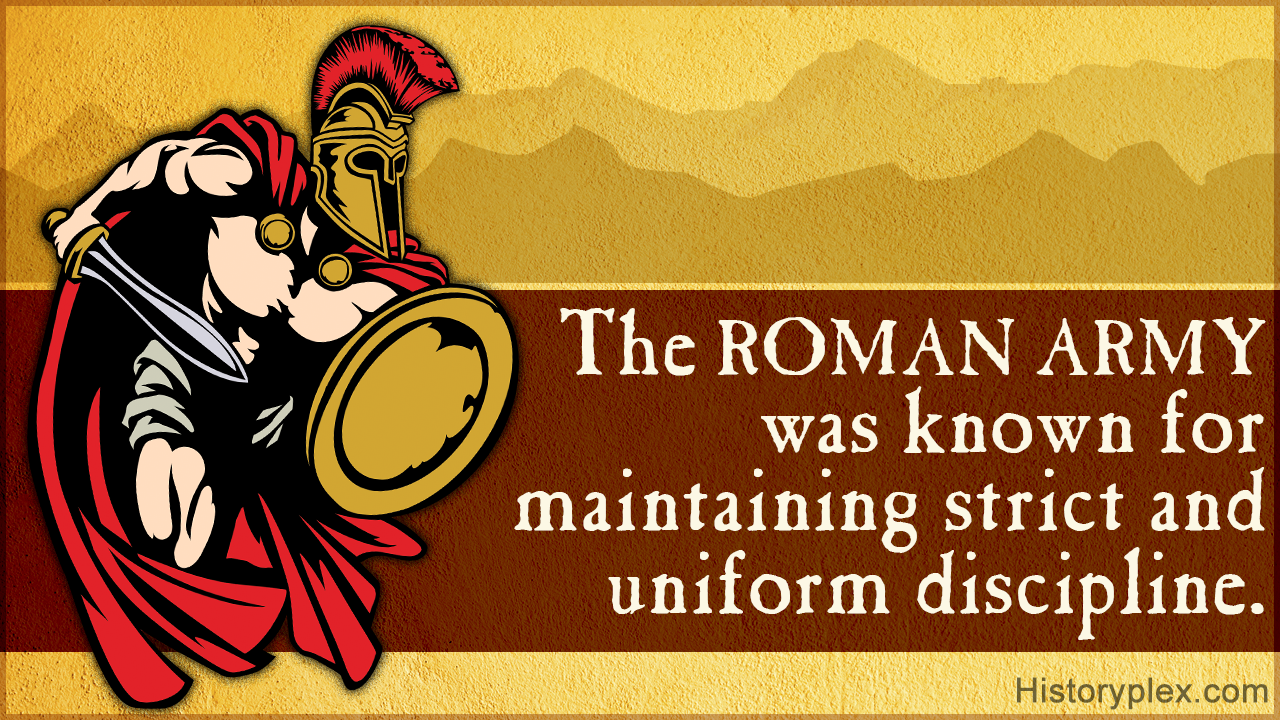
The tactics and strategies of the Roman army helped them fend more than half of the world, and thus they came to be known as one of the best armies, which remains unchanged even today. The following Historyplex article sheds light on their war strategies in detail.
Did You Know?
Over one quarter of the world’s population lived and died under the rule of the Roman empire.
The Roman empire, at the peak of its power, stretched from England in the north to Egypt in the south. It also brought the present Middle East under its rule. It was known as the empire without boundaries, and was one of the largest empires ever.
A crucial reason for such a large empire was the army that the Romans maintained. Throughout its history, politics was played dirty in Rome, and many a time, Rome made a transition from a republic to an empire and back to a republic again. Regardless of who controlled the empire, the army remained a constant in all external affairs. The army was revered almost sacred and was respected by the commoners and the elite alike.
INDEX
Roman Army Effectiveness
The reasons why the army was particularly effective in bringing foreign lands under the Roman yoke are elucidated below:
Discipline
Strict and uniform discipline was maintained in the army. New recruits went through rigorous training and lessons in discipline. There were strict punishments for any wrongdoings with respect to order in the army.
Organization and Structure
A lot of money and effort was spent in command and control of the troops. Replacement of exiting troops and recruitment were also given special attention. Efficient leaders proven in battle were chosen to command men. These leaders were war heroes, and hence, they won their troop’s respect by example, not just by title.
Conquests
A thirst for conquests was popular with the republic and the empire.The emperor would order conquests for personal glory, and the consuls with the help of the senate would order conquests for bringing wealth to Rome. Persistence in long drawn conquests and ambition to still bring more land played a part in the army’s upgrades and war preparedness.
Constant Learning and Upgrades
The Roman army learned constantly. They borrowed tactics from better armies and implemented them, thus, making their own army much more efficient. Also, Roman engineering was second to none in the whole of Europe. Armors, siege weapons, blades, and even the way the wooden shaft of a pilum would break during thrusts and on contact were efficiently researched and designed.
Army Tactics
The Triple Line Formation

This formation was the primary formation of the Roman infantry.
The first line: The first line comprised the hastati, or the newest recruits. They were the youngest and the most inexperienced in battle and hence were used in the first line of attack.
The second line: This line held the principes. They were soldiers of sufficient experience and were at the peak of physical health. They would kill anyone who got through the first line.
The third line: This comprised the triarii or the veterans of combat. They were hugely experienced soldiers and hence were kept at the back of the line to motivate those in the front lines. If an attack penetrated the first two lines of infantry, the triarii took to battle to either contain it or make way for an organized retreat.
The Wedge Formation

In this tactic, the infantry lines were thinned to provide an incisive attack into the enemy lines. The stab would usually contain a mixture of hastati and principes with a few triarii at the center to start skirmishing after the enemy lines were breached.
The Extended Line

This formation was popularly used by Hannibal of Carthage to defeat the Romans. Later, the Romans used this tactic in their own army. It was used to counter wider enemy lines and sometimes also to outflank them from either sides.
The Weak Center

A counter to the wedge, this formation invited the enemy to attack a seemingly vulnerable center. The vulnerable center was usually backed up by reserve troops, and if the enemy took the bait and tried to penetrate the lines through it, a bottleneck effect would take place and the thin column of enemy troops would be hacked down by all sides.
The Strong Right/Protected Flank

This tactic could be used defensively as well as offensively. An offensive flank would be used to penetrate a side of the enemy line and then try to get behind their lines to attempt an attack from the behind. A defensive flank would be a counter to an offensive flank.
The Zama



Some More Special Tactics
Repellere Equites

As the name suggests, this formation was employed to counter attacks from the enemy cavalry. The infantry would form a tight square with shields at the boundary, protecting the soldiers within this boundary. Pilums were stuck out in between the shields to thrust at the incoming horses.
Testudo Formation

Also known as the tortoise formation, it is still the most famous formation known about the Roman army. Here, the front row of soldiers would hold their shields in front of them to protect soldiers from projectiles. The back rows of the soldiers would hold their shields above their heads. This protected the soldiers from overhead projectiles. This led to a tight formation, which was virtually impenetrable. However, due to this formation, it hampered troop mobility and flexibility.


